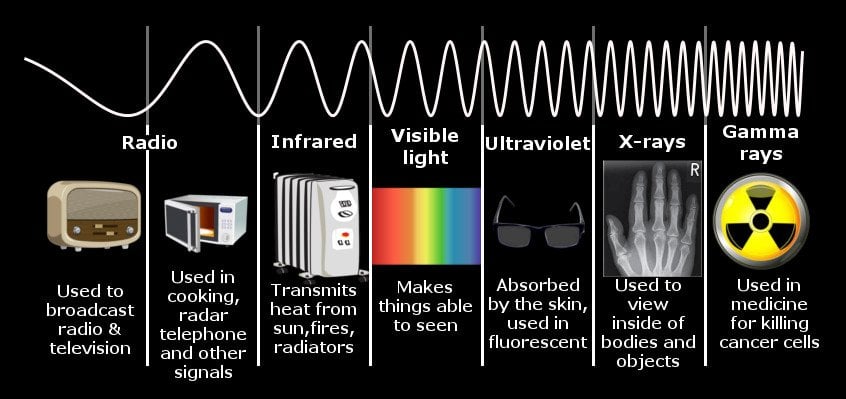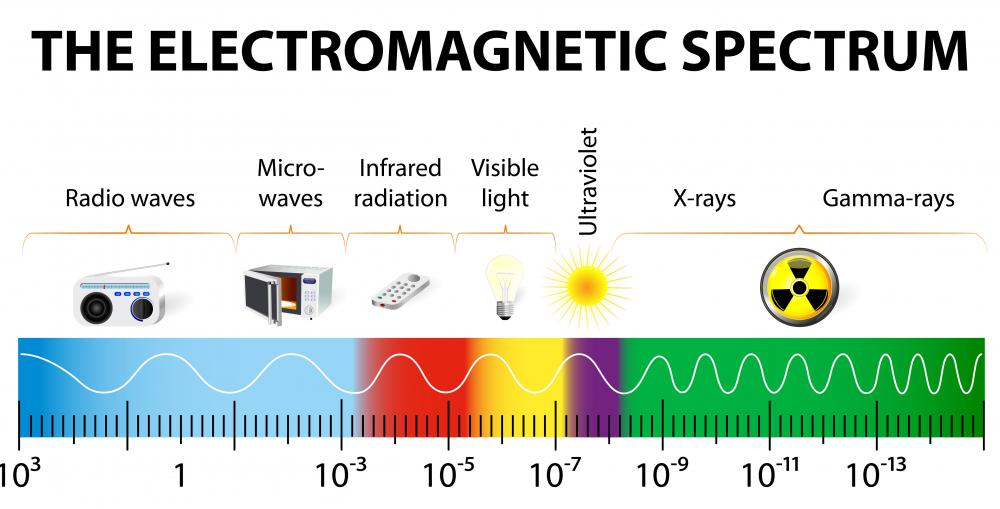
These findings may be of help in chiral particle trapping, nanoscale chiral detection, and sensing. Moreover, the structure and appearance of the optical chirality density are dominated by the longitudinal component of its flow. In contrast, handedness mainly affects the magnitude of the optical chirality density and longitudinal component of flow, whereas both density and flow are independent of the input orientation. Electromagnetic radiation is massless with no charge, while wavelength and frequency of oscillating fields are related to each other by the following equation: (1.2) However, they are still affected by gravity. Ellipticity affects the localization and magnitude of both chirality density and flow. The evolution of nonparaxial electromagnetic chirality of input fields from the Poincaré sphere view is explored in addition its roles in relation to ellipticity, handedness, and orientation are revealed based on the analytical model.
#Electromagnetic radiation cannot be focused full
Analytical forms of the electric and magnetic field strength vectors as well as optical chirality density and flow of strongly focused full Poincaré sphere beams are presented.

Usually, when we hear the word radiation, positive images don’t pop up in our minds. what photon energies in this beam of light are observed to be significantly reduced in intensity (“dark absorption lines”)? explain briefly.Chirality, which describes not only the three-dimensional mirror-symmetry violation of objects but also the local handedness and spatial geometrical structure of electromagnetic fields, has gained enormous interest recently because of its fundamental features as well as practical and potential applications in chiral light–matter interactions. Thus, a relativistic-flying parabolic mirror reflects the counterpropagating radiation in the form of a focused and flying electromagnetic wave with a high frequency. From watching the news, you have probably heard the controversial back-and-forth about if low-energy Electromagnetic Radiation (EMR), or Electromagnetic Field (EMF) radiation, can damage cells and cause adverse health effects. electromagnetic radiation) can be characterized. Despite extensive research, to date there is no evidence to conclude that exposure to low level electromagnetic fields is harmful to human health. Examples of EM radiation include radio waves and microwaves, as well as infrared, ultraviolet, gamma, and x-rays. Describe some outstanding problems that are the focus of current research. It contains neither mass nor charge but travels in packets of radiant energy called photons, or quanta. Many tools use different wavelengths on the electromagnetic spectrum. next, a beam of light with a continuous range of energies from infrared through ultraviolet shines on the material, and the photon detector observes the beam of light after it passes through the material. Electromagnetic radiation is an electric and magnetic disturbance traveling through space at the speed of light (2.998 × 108 m/s). We use special tools to detect things far away that we cant see with just our eyes. the use of signals that cannot be intercepted by third parties. (b) would a spring–mass model be a good model for these microscopic objects? why or why not? (c) the material is now cooled down to a very low temperature, and the photon detector stops detecting photon emissions. A method for generating electromagnetic radiation, including the steps of: providing a.

on the diagram, indicate the transitions corresponding to the emitted photons. (a) draw and label a possible energy-level diagram for one of the microscopic objects, which has four bound states. these are the only photon energies observed. a photon detector capable of detecting photon energies from infrared through ultraviolet observes photons emitted with energies of 0.3 ev, 0.5 ev, 0.8 ev, 2.0ev, 2.5ev, and 2.8ev.

Infrared, radio, etc.) A cursory google search revealed nothing of this sort, which makes me suspect that i this is not possible. Some material consisting of a collection of microscopic objects is kept at a high temperature. Since light is nothing more than a narrow band of the electromagnetic spectrum, it makes me wonder if the same high power/intensity applications can be achieved at a lower cost by concentrating other wavelengths (e.g. Nanofocusing of electromagnetic radiation, that is, reducing the cross sections of propagating optical modes far beyond the diffraction limit in dielectric media, can be achieved in tapered metal.


 0 kommentar(er)
0 kommentar(er)
